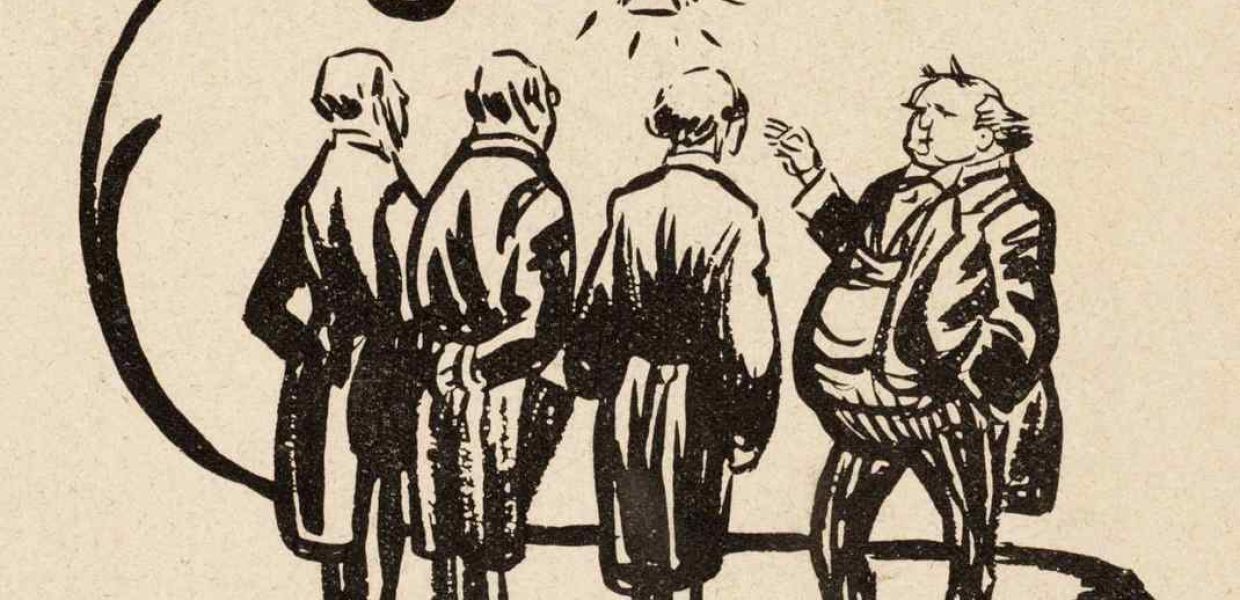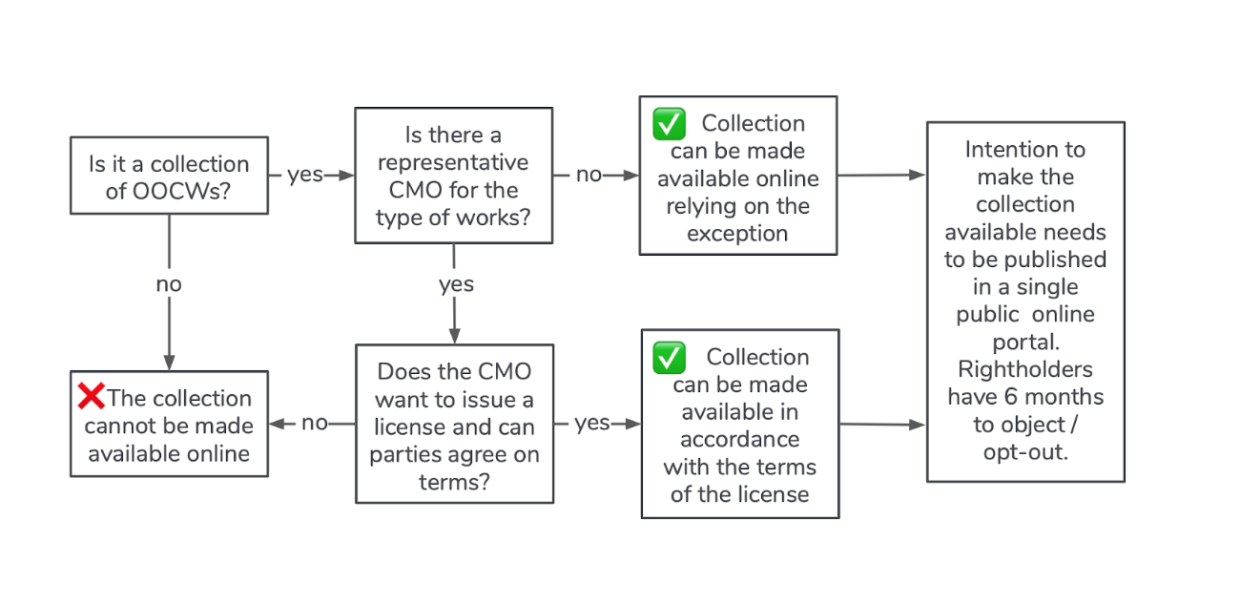There are two obvious weak links in this process. First it may turn out too complicated for cultural heritage institutions to the identify substantial amounts of works as being Out of Commerce. According to the directive Works are Out of Commerces Works "when it can be presumed in good faith that the whole work [...] is not available to the public through customary channels of commerce, after a reasonable effort has been made to determine [this] (Article 8(5)). While this definition makes a lot of sense for published works such as books and journals it will be much harder to operationalise for other types of works such as artworks, audiovisual works or photos (although recital 30 further clarifies that works were "never intended for commercial use or that they have never been exploited commercially" are included in the definition).
The second weak point is the fact that while the directive requires Member States to ensure that representative CMOs can issue licenses for collections of Out of Commerce Works that include works by non-members, it does not require them to do so. This means that CMOs can simply refuse to issue licenses for example because they are not commercially interesting for them. In situations where a representative CMO exists but does not (want to) issue a license the cultural heritage institution cannot proceed with making the the works available as the fallback exception only applies in situations where a representative CMO does not exist.
Dialogue with rights holders will be essential
Fortunately both of these weak points can still be addressed in a meaningful way during the national implementations of the directive. Article 11 requires Member States to "consult rightholders, collective management organisations and cultural heritage institutions in each sector" before establishing specific requirements for the determination of Out of Commerce status of works. Member States shall further "encourage regular dialogue between representative users' and rightholders' organisations, including collective management organisations, and any other relevant stakeholder organisations, on a sector-specific basis".
This means that the question of how useful the directive will be in practice will depend a lot on a good collaboration between cultural heritage institutions and collective management organisation on the Member State level. At this national level these dialogues provide an opportunity for all stakeholders to agree on workable rules for determining the Out of Commerce status of collections, to make clear determinations for which types of works the fallback exception does not apply and to establish trust between cultural heritage institutions and CMOs that can facilitate the conclusion of licensing agreements once the directive has been implemented.
The crucial role of the public single online portal
In addition to good collaboration on the national level it will also be essential that the "public single online portal" that will be developed by the EUIPO be designed in such a way that it facilitates the process of making Out of Commerce Works available online. By designing the portal as a service aimed at facilitating the mass digitisation of OOCWs the portal could significantly boost the impact of the directive.
This means that in addition to the minimal requirements identified in the directive the portal should also serve as an information hub for CHIs wanting to digitise collections of OOCWs and as a persistent resource for information about OOCWs and opt-outs registered by right-holders. It needs to allow batch uploads via a web interface and APIs and support commonly used metadata formats used within the cultural heritage sector. To be meaningful for visual works the portal further needs to allow the publication of reduced size thumbnails as part of the required identifying information.
All of this requires that the EUIPO closely involves all relevant stakeholders (cultural heritage institutions, collective management organisations and other rightholders) in the design process.
A unique opportunity
Despite their apparent complexity the new rules for Out of Commerce works have the potential to break open the gridlock that many cultural heritage institutions face when digitising their collections. Embedded in the implementation process is an opportunity for cultural heritage institutions to make their voice heard within their Member States. This means working with the relevant government officials to allow them to understand the needs and realities of the cultural heritage sector. Equally important this also means engaging in a dialogue with CMOs and rights holders to identify practical arrangements that work for both sides.



